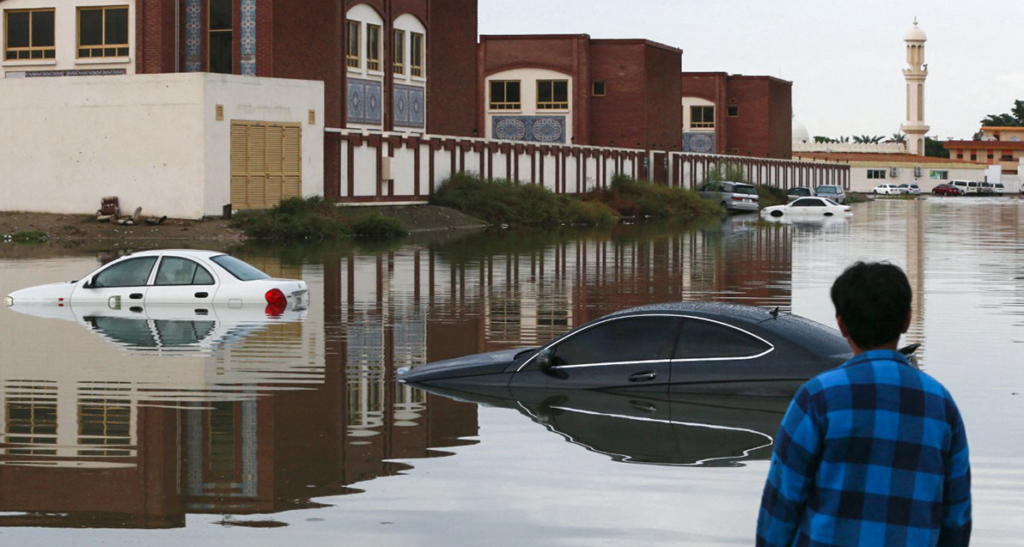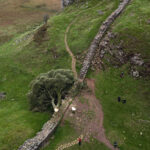In the summertime of 2022, flash floods brought on by heavy monsoon rains in Pakistan, Oman, the United Arab Emirates and southeastern Iran killed greater than a thousand individuals. On this a part of the world, excessive climate modifications between the monsoon and the dry season decide subsistence cycles and monetary livelihoods, with related dangers to life and property. Nevertheless, altering world precipitation patterns attributable to local weather change are altering the timing and magnitude of those occasions.
Within the Center East and North Africa, the Arabian Sea performs an necessary function in each the South Asian and African monsoons, and is a supply of moisture. Temperature and vapor stress within the northern Arabian Sea have elevated steadily because the Eighties, and regional sea floor temperatures have risen steadily since 2003. Mixed, these phenomena are a recipe for catastrophe. The hotter common air mass above the ocean has a higher capability to retain water and can due to this fact take longer to saturate. This lengthens the typical time between precipitation occasions, however it additionally makes it extra prone to produce catastrophic quantities of precipitation when it does.
What will be completed to adapt to this new actuality? Can the infrastructure be tailored, optimized or presumably even redesigned to make the most of such occasions?
Modified infrastructure
Floor water assortment, transport and remedy infrastructure might want to adapt to the brand new actuality of local weather change, maybe sooner in MENA than anyplace else. The correlation between traditionally excessive occasions and the ‘new regular’ may function steerage for the difference of already current infrastructure, in addition to up to date necessities for the development of recent infrastructure. This have to be based mostly on sound statistics and up-to-date analyzes of flood frequency. For instance, whether it is decided that flooding that beforehand certified as a “500-year occasion” is now a “100-year occasion,” then watersheds, spillway design, and dam heights have to be modified to mirror this new actuality .
Along with uncovered impoundments and flood management buildings, progressive options for the storage, transportation, and remedy of water extracted from these excessive occasions must be thought-about if the meant finish use is municipal or industrial. As a result of giant components of the MENA nations throughout the Arabian Sea are sparsely populated, diversifications that emphasize effectivity and adaptability in capturing or transporting throughout huge, typically arid areas can be important. This might embrace, for instance, groundwater infiltration basins in areas statistically recognized as extra prone to be visited by cyclones, lined tanks (to scale back evaporation losses) and pipelines from these areas to strategic switch factors within the regional infrastructure. Incorporating passive remedy of captured water, photo voltaic vitality, and even small-scale hydroelectric energy crops into these designs can improve water and vitality safety.
The supply sort can also be necessary. Smaller nations, or these with a extra homogeneous panorama (comparable to Bahrain or Qatar) solely have to give attention to adapting to the particular sort of maximum occasion they most frequently encounter. Nevertheless, infrastructure in Arabian Sea area nations with various geography, comparable to Oman, will be tailored to make the most of episodic heavy rainfall or, extra not often, heavy snowfall and the variations within the timing of water arrival from each nations.
Modified landscapes
Monsoon rains are extremely localized, and a few nations bordering the Arabian Sea, comparable to Oman, are uniquely positioned to learn not solely from “Khareef season” (خريف, the summer season monsoon) but additionally of its reversal. Between the months of June and September, the Salalah area of southern Oman will expertise rain from the prevailing south-westerly winds constructing alongside the southern coast, whereas heat, moist air from the Arabian Sea flows in the direction of the Indian subcontinent. In direction of the top of summer season within the Northern Hemisphere, this sample reverses as East Africa warms, inflicting winds from the Gulf of Oman to drop rain and generally snow on the Hajar Mountains. Cyclones, alternatively, can have an effect on giant areas and have gotten more and more widespread within the Arabian Sea, inflicting vital rainfall, storm surges and powerful winds. Utilizing superior location instruments (for instance, a mixture of a geographic data system, synthetic intelligence, or up to date world circulation fashions), key areas of the panorama will be designed or enhanced to make the most of such occasions by appearing as large-scale watersheds. amenities, capturing useful runoff, wave vitality or controlling sediment transport. Maximizing the native use of such assets – for small-scale vitality, panorama irrigation or environmental flows – would eradicate the necessity for each transport and remedy.
Nexus
If it seems like the road between panorama and infrastructure is blurring, perhaps it must be. If buildings and roads are designed to face up to the impacts of ‘excessive’ local weather occasions, why not reshape the surroundings to attach with an acceptable vitality and water provide infrastructure and profit from the potential windfall? Hurricane Harvey dumped greater than 20×1012 Gallons of water on the US Gulf Coast in the summertime of 2017. Had the storm stalled over the southwestern US, 17 years of drought would have been reversed and floor system reservoirs would have stuffed inside every week.
The blueprint for reworking occasions like this from legal responsibility into potential windfalls already exists, albeit on a smaller scale. Many metropolis and regional utilities outdoors MENA encourage simultaneous compliance with security and environmental requirements earlier than approving new infrastructure. Scaling up such an strategy would require an analogous leap ahead in planning and regulation. City planning would turn into regional planning, taking coordination between civil, geotechnical and environmental engineering to a brand new stage.
Financing choices for such initiatives ought to evolve consistent with the rising threats posed by local weather change. Choices for build-operate-own situations underneath public-private partnerships might be negotiated by non-governmental, UN or World Financial institution-affiliated organizations, such because the Inexperienced Local weather Fund or the International Adaptation Fund, if public financing for the affected nations within the MENA area was restricted. Water charges will be structured based mostly on the ephemeral nature of the useful resource. The issue of capturing and transporting the useful resource might be included, with related prices included into present operations and administration. The cash saved by not having to pump and deal with an equal quantity of this ‘free water’ might be used to additional broaden the useful resource, for instance flowing again into reuse and recycling packages. The main points of such packages are much less necessary at this stage than a broader vary of methods to make the most of potential alternatives to scale back the harm brought on by local weather change.
Conclusion
Moderately than planning for local weather situations based mostly solely on the established order of danger administration, we should always contemplate that as the size and robustness of infrastructure are examined at ranges by no means earlier than skilled in trendy instances as a result of rising impacts of local weather change, it could be time for the same quantum leap in fascinated by how we strategy these challenges by viewing these local weather dangers as alternatives. The MENA nations throughout the Arabian Sea local weather affect will definitely have to buffer towards the detrimental impacts of maximum climate, however may also search for progressive advantages from experiencing this stage of local weather vulnerability.
Orestes Morfín is a senior planning analyst with the Central Arizona Water Conservation District and a non-resident scientist with MEI’s Local weather and Water Program.
Picture by AFP by way of Getty Pictures
The Center East Institute (MEI) is an impartial, non-partisan, non-profit academic group. It doesn’t interact in advocacy and the opinions of its students are their very own. MEI welcomes monetary donations, however retains unique editorial management over its work and its publications mirror solely the opinions of the authors. For an inventory of MEI donors, click on here.


